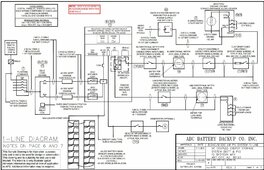there are no rules as too how much you have to use, or what its capacity is.
Here, where I’m at in NE Vermont, the utility has a coupla different fees on every bill regardless of kWh BUT they charge an additional fee ($7.95?) if you don’t use over some very small amount of kWh per month. IIRC that works out somewhere just over $30/month minimum charges ($360/yr).
So it sorta is a rule. Vermont is weird politically, and nimby is strong.
For me, (totally offgrid capability and sustainable other than Nov- Feb, March-ish (about 18gal/$60 of gasoline generator since Sept)) the combined costs to connect to grid were ~$5200 before I even bought an approved UL1741”.x” inverter so I could send to grid. Problem being that it’s net metering, so I’d get $nothing$ of an advantage economically on an annual basis.
My solar is more than adequate for residential usage. However, while adding sufficient kWh capacity to run the shop tools (welders, tablesaw, plasma, compressor) was partly why I wanted to grid connect, the ~$5k up front with net metering inverter/equipment on top of that didn’t make sense to me.
So I bought a mid-sized adequate generator (that I thought I might want anyway) and another ~2kWh of storage, and will implement a low-frequency AIO strategy for the shop this summer.
That’s worked out pretty well so far. Since everything was procured on the one-payment plan and doesn’t cost $360/yr to be connected, it makes economic sense on a near break-even balance sheet. If ‘they’ actually paid me something to sell power (above net metering) I’d likely have just done it.
So in Vermont there are ‘rules’ they manipulate the market to implement instead of limiting incentives or writing actual language into law.
sidebar: my aunt and uncle in another state actually make $9k-$14k annually on their solar installation. They are about 12 years into the contract and it is state regulated.
If you consume a lot of kWh here (irrespective of “efficiency” realities) then the net metering sorta makes sen$e I guess? But there’s still a cost structure associated- here- that essentially creates its own ’rules.’



